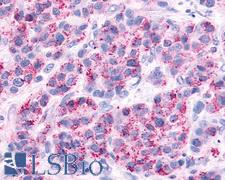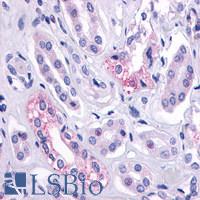Login
Registration enables users to use special features of this website, such as past
order histories, retained contact details for faster checkout, review submissions, and special promotions.
order histories, retained contact details for faster checkout, review submissions, and special promotions.
Forgot password?
Registration enables users to use special features of this website, such as past
order histories, retained contact details for faster checkout, review submissions, and special promotions.
order histories, retained contact details for faster checkout, review submissions, and special promotions.
Quick Order
Products
Antibodies
ELISA and Assay Kits
Research Areas
Infectious Disease
Resources
Purchasing
Reference Material
Contact Us
Location
Corporate Headquarters
Vector Laboratories, Inc.
6737 Mowry Ave
Newark, CA 94560
United States
Telephone Numbers
Customer Service: (800) 227-6666 / (650) 697-3600
Contact Us
Additional Contact Details
Login
Registration enables users to use special features of this website, such as past
order histories, retained contact details for faster checkout, review submissions, and special promotions.
order histories, retained contact details for faster checkout, review submissions, and special promotions.
Forgot password?
Registration enables users to use special features of this website, such as past
order histories, retained contact details for faster checkout, review submissions, and special promotions.
order histories, retained contact details for faster checkout, review submissions, and special promotions.
Quick Order
PathPlusTM AVPR2 / V2R Antibodies
AVPR2 / V2R is the vasopressin receptor, type 2, also known as the V2 receptor, which belongs to the seven-transmembrane-domain G protein-coupled receptor (GPCR) superfamily, and couples to Gs thus stimulating adenylate cyclase. The subfamily that includes the V2 receptor, the V1a and V1b vasopressin receptors, the oxytocin receptor, and isotocin and mesotocin receptors in non-mammals, is well conserved, though several members signal via other G proteins. All bind similar cyclic nonapeptide hormones. The V2 receptor is expressed in the kidney tubule, predominantly in the distal convoluted tubule and collecting ducts, where its primary property is to respond to the pituitary hormone arginine vasopressin (AVP) by stimulating mechanisms that concentrate the urine and maintain water homeostasis in the organism. When the function of this gene is lost, the disease Nephrogenic Diabetes Insipidus (NDI) results. The V2 receptor is also expressed outside the kidney although its tissue localization is uncertain. When these 'extrarenal receptors' are stimulated by infusion of a V2 selective agonist (dDAVP), a variety of clotting factors are released into the bloodstream. The physiologic importance of this property is not known - its absence does not appear to be detrimental in NDI patients. The gene expression has also been described in fetal lung tissue and lung cancer associated with alternative splicing.
References: The UniProt Consortium. Nucleic Acids Res. 47: D506-515 (2019); Nucleic Acids Res. 2016 Jan 4;44(D1):D733-45, PMID:26553804
2 PathPlusTM Antibodies


☰ Filters
Products
Antibodies
(2)
Type
Primary
(2)
Target
AVPR2 / V2R
(2)
Reactivity
Human
(2)
Mouse
(1)
Rat
(1)
Hamster
(1)
Monkey
(2)
Rabbit
(1)
Application
IHC
(2)
IHC-P
(2)
Host
rabbit
(2)
Product Group
GPCR Database Antibodies
(2)
PathPlus Cancer
(2)
Clonality
polyclonal pc
(2)
Format
Unconjugated
(2)
Epitope
C-Terminus
(1)
Cytoplasmic Domain
(1)
Publications
No
(2)

Cancer
Fast Shipping
AVPR2 / V2R Rabbit anti-Human Polyclonal (Cytoplasmic Domain) Antibody
Rabbit, Mouse, Rat, Hamster, Human, Monkey
IHC, IHC-P
Unconjugated
50 µg/$440

Cancer
Fast Shipping
AVPR2 / V2R Rabbit anti-Human Polyclonal (C-Terminus) Antibody
Human, Monkey
IHC, IHC-P
Unconjugated
50 µg/$440
Viewing 1-2
of 2
product results










